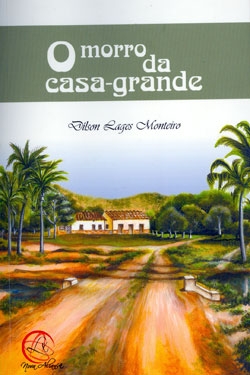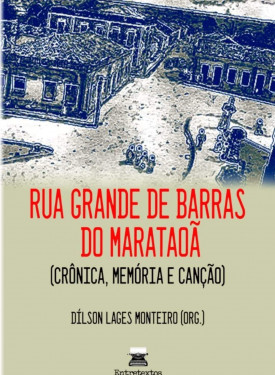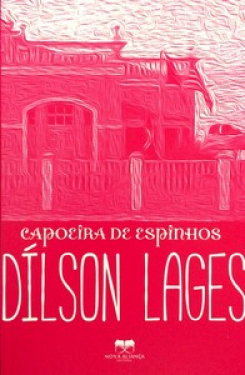Príncipe Valente no cinema
 Por Flávio Bittencourt Em: 30/10/2011, às 14H38
Por Flávio Bittencourt Em: 30/10/2011, às 14H38
[Flávio Bittencourt]
Príncipe Valente no cinema
Aparecido em 1937, no jornal The Times-Picayune, de Nova Orleans, O Príncipe Valente, de Hal Foster, mereceu interessantes versões cinematográficas em 1954 e 1997, sendo que a primeira tornou-se absolutamente cult.

(http://esquizofia.wordpress.com/2009/08/31/se-tua-mae-quer-um-rei/)

(http://jimlanescinedrome.blogspot.com/2011/02/films-of-henry-hathaway-prince-valiant.html)
REI - O PAI DO PRÍNCIPE:
(http://www.upgraph.com.br/404.htm)
"(...) On September 27, 1931 Foster took over the Tarzan Sunday page (Maxon continued on the dailies). Starvation and Tarzan brought Foster back into cartooning.
The 1930's ushered in many important comic strips and set new artistic standards for creators. Chic Young's Blondie first appeared in 1930. Chester Gould's Dick Tracy began in 1931, and Foster returned to illustrate the Tarzan Sunday strip. Alex Raymond created Flash Gordon, Jungle Jim and (with Dashiell Hammett) Secret Agent X-9 in 1934, while Al Capp's Li'l Abner, Lee Falk & Phil Davis' Mandrake the Magician, and Milton Caniff's Terry & The Pirates also debuted that year. Mickey Mouse Magazine and Zane Grey's King of the Royal Mounted were published in 1935 and in 1936, Lee Falk & Ray Moore's The Phantom began haunting the jungles.
Ever gracious with his good fortune, Hal parceled out assignments to his fellow artists and paid them from his earnings. Initially Foster was content to scratch out the pages, but then the fan letters started coming. The strip became a source of pride and he brought to it all of his talents. Foster was the first illustrator to bring a painterly, impressionistic approach to comics, and an early experimenter with chiaroscuro. He paved the way for cartoonists like Noel Sickles and Milton Caniff. In Foster's hands the Tarzan strip became as epic as any movie. His two-year "Egyptian" sequence is one of the watershed events in the medium and its quality and consistency has never been matched.
Frustrated over poor scripts and the creative constraints imposed on him by laboring on someone else's property, Foster began working on a character of his own, Derek, Son of Thane. Hal later changed the strip's title to Prince Arn and King Features Syndicate's general manager, Joseph Connelly would finally re-christen it Prince Valiant. Hal decided early on that his hero would be a Knight of the Round Table and made tens of thousands of notes and sketches. By the time he was done he'd laid out the history of "The Prince of Thule" from his earliest days to his old age. In 1936, Foster approached United Features Syndicate with his idea. In what is considered by most to be one of the worst business decisions in the history of comic strips, they turned him down.
Foster's offer to United Features was simply a courtesy. William Randolph Hearst wanted Foster and "what Hearst wanted Hearst got." During the previous eighteen months, Hal had been corresponding with a representative from Hearst's King Features Syndicate. The newspaper tycoon was so impressed with Foster's work on Tarzan that he promised Hal complete ownership of any comic strip he developed—a very rare offer in those days. Unknowingly, Hearst let Foster go in 1928, when he turned down Joseph Neebe's original Tarzan proposal and he wasn't about to make the same mistake again.
The first episode of Prince Valiant in the Days of King Arthur appeared on February 13, 1937. Foster was 44. (...)"
(http://www.bpib.com/illustra2/foster.htm)
 (http://jimlanescinedrome.blogspot.com/2011/02/films-of-henry-hathaway-prince-valiant.html)
(http://jimlanescinedrome.blogspot.com/2011/02/films-of-henry-hathaway-prince-valiant.html)
"[(...) Para alguns historiadores, talvez ele tenha sido uma pessoa real em torno da qual muitas lendas e histórias foram criadas. Ao longo dos séculos surgiram duas correntes principais: na primeira, emerge o herói nacional inglês que lutou para unificar a nação, e na segunda, a questão religiosa prevalece, com a história do Santo Graal e o fracasso do imperfeito Lancelot. Mas foi somente no século XV que a saga como a conhecemos se consolidou, a partir da novela épica A Morte de Arthur, escrito por Sir Thomas Malory e publicado pela primeira vez em 1485. (...)",
http://2001video.empresarial.ws/blog/?p=1697]

(http://swordandsandalkids.blogspot.com/2010/01/prince-valiant-dr-by-henry-hathaway.html)

[http://2001video.empresarial.ws/blog/?p=1697,
fotografia de cena na qual aparecem os atores
cinematográficos Sean Connery e Julia Ormond:
"Lancelot, O Primeiro Cavaleiro
(First Knight, EUA, 1995, Cor, 133′)
De: Jerry Zucker
Com: Sean Connery, Richard Gere, Julia Ormond,
Sean Connery (ao lado de Julia Ormond/Guinevere) interpreta um Rei Arthur mais velho em Lancelot, o Primeiro Cavaleiro. O filme foca sua trama apenas no clássico triângulo amoroso formado por Arthur (Sean Connery), Guinevere (Julia Ormond) e Lancelot (Richard Gere), condensando ou eliminando as outras subtramas da saga."]
O PRÍNCIPE VALENTE,
PERIGOSAMENTE TRABALHANDO:

(http://thewildreed.blogspot.com/2010/08/valiant-first-effort-wouldnt-you-say.html)
O IMORTAL HAL FOSTER,
TRABALHANDO EM SUA PRANCHETA:

(http://thewildreed.blogspot.com/2010/08/valiant-first-effort-wouldnt-you-say.html)
"EM MATÉRIA DE PRÍNCIPE VALENTE, DE HAL FOSTER, O PRINCIPAL É NÃO CONFUNDIR
O REI AGUAR COM O REI ARTUR, SOB PENA DE VOCÊ SER DISCRIMINADO PELAS
PESSOAS FANÁTICAS PELAS ESTÓRIAS DE PRÍNCIPE VALENTE COMO PERTENCENDO
AO GRUPO DOS EXCLUÍDOS QUE ACHAM QUE O REI AGUAR É O REI ARTUR" (*risos*)
(COLUNA "Recontando estórias do domínio publico")
"FOCINHO DE PORCO NÃO É TOMADA E O REI AGUAR NÃO É O REI ARTUR,
AQUELE DA TÁVOLA REDONDA E DAS LENDAS DO CICLO ARTURIANO"
(IDEM)
"AS PESSOAS QUE PORVENTURA NÃO ADMIRAM O
TRABALHO CINEDRAMATÚRGICO DE SEAN CONNERY QUE
ME PERDOEM, MAS ESSE GRANDE ATOR ESCOCÊS INTERPRETANDO
O REI ARTUR - que absolutamente não é o Rei Aguar! - FEZ COM QUE
O REI ARTUR FOSSE ELE (E SOMENTE ELE), SEAN CONNERY,
NÃO A PESSOA MR. CONNERY, É CLARO, MAS S. CONNERY
ENCARNANDO TEATRAL-CINEMATOGRAFICAMENTE ARTUR"
(IBIDEM)
"A lenda do rei Artur tem origem na literatura galesa do século V. A versão de Thomas Malory é do século XV e incorpora elementos cristãos e personagens das culturas saxônica, normanda e escandinava à sua base celta. Artur já nasce destinado a ser rei. Filho de Uther Pendragon, rei de toda a Inglaterra, e de Igraine, esposa do Duque de Tintagil, da Cornualha, foi concebido graças aos estratagemas mágicos do mago Merlin. Ainda jovem, torna-se rei por ser o único a tirar da pedra a espada mágica, Excalibur. Os cavaleiros de Artur estavam em busca do Santo Graal, o cálice que Cristo havia usado na última ceia e que José de Arimatéia teria levado para a Inglaterra."
(http://literaturasdigitais.blogspot.com/2010/08/o-rei-artur-e-os-cavaleiros-da-tavola.html)

(http://literaturasdigitais.blogspot.com/2010/08/o-rei-artur-e-os-cavaleiros-da-tavola.html)
RICHARD GERE, TRABALHANDO, É O MÍTICO LANCELOT, o Primeiro Cavaleiro,
QUE SE APAIXONOU LOUCAMENTE PELA DOCE, BELA E BENEMERENTE
GUENIÈVRE:

(http://www.excessif.com/cinema/actu-cinema/dossiers/rois-et-reines-au-cinema-de-la-realite-a-la-fiction-6394011-760-RElBX05VTUVSTyA3.html, onde se pode ler [EM FRANCÊS]:
"Lancelot, le premier chevalier - Milieu des années 90, Richard Gere est un sex symbol que le tout Hollywood s'arrache. Dès lors, pas étonnant qu'il est choisi pour incarner le mythique Lancelot, l'un des chevaliers de la Table Ronde, fidèle du roi Arthur (Sean Connery) et fou amoureux de Guenièvre (Julia Ormond)."
HOMENAGEANDO OS GRANDES ATORES
SEAN CONNERY, que, no cinema, já foi o justo e sábio Artur,
JULIA ORMOND, que intepretou a doce e bondosa Guenièvre ou Guinevere,
RICHARD GERE, que encarnou o intrépido e nobre cavaleiro Lancelot, e
JERRY ZUCKER, o diretor de Lancelot, o primeiro cavaleiro (EUA, 2005)
[DIRETOR DE GHOST E CO-DIRETOR DE
APERTEM OS CINTOS, O PILOTO SUMIU!],
A QUEM SE DESEJA MUITA SAÚDE E VIDA LONGA - como
aos outros competentes profissionais que participaram
da elaboração desse épico e espantoso filme -,
TODAS AS PESSOAS QUE TRABALHARAM NAS
DUAS VERSÕES CINEMATOGRÁFICAS DO PRÍNCIPE VALENTE,
AS AINDA VIVAS E AS QUE INFELIZMENTE JÁ NÃO MAIS ESTÃO
ENTRE NÓS, em memória, E AO CRIADOR GENIAL DOS QUADRINHOS
HAL FOSTER, QUE, POR TER-SE TORNADO, EM VIDA, IMORTAL,
ESTÁ CADA VEZ MAIS PRESENTE - e vivo! - ENTRE OS "curtidores" DO
CORAJOSO, HÁBIL E GENEROSO
PRÍNCIPE VALENTE
30.10.2011 - Aparecido em 1937, no jornal The Times-Picayune, de Nova Orleans, O Príncipe Valente, de Hal Foster, mereceu interessantes versões cinematográficas em 1954 e 1997, sendo que a primeira tornou-se absolutamente cult - Príncipe Valente, 1954, no cinema. F. A. L. Bittencourt ([email protected])
VERBETE 'FILME PRÍNCIPE VALENTE (1954)',
WIKIPÉDIA:
"Prince Valiant
| Prince Valiant | |
|---|---|
| Príncipe Valente (BR) | |
1954 • cor • 100 min |
|
| Produção | |
| Direção | Henry Hathaway |
| Roteiro | Dudley Nichols |
| Elenco original | James Mason Janet Leigh Robert Wagner |
| Género | aventura |
| Idioma original | inglês |
IMDb: (inglês) (português) |
|
| Projeto Cinema • Portal Cinema | |
Prince Valiant (br: Príncipe Valente) é um filme estadunidense de 1954, do gênero aventura medieval, dirigido por Henry Hathaway, e inspirado nas aventuras do herói homônimo das histórias em quadrinhos criadas por Harold "Hal" Foster.
Sinopse
O rei Aguar e sua família viking se tornaram cristãos e por isso são vítimas de traição e fogem para o exílio, ficando sob a proteção do Rei Artur e dos Cavaleiros da Távola Redonda. Quando atinge a maioridade, o filho de Aguar, Príncipe Valente, é enviado pelo seu pai à corte do rei Artur, para se tornar cavaleiro. Ao chegar à praia, ele é atacado por um misterioso Cavaleiro Negro. Consegue fugir e chegar até Camelot, onde fala com o rei. Pedindo para ser cavaleiro, o rei lhe põe aos cuidados de Sir Gawain, para treinar como escudeiro.
O Príncipe Valente desejava ser escudeiro do galante Sir Brack, e acaba fugindo para se encontrar com o cavaleiro. Levando-o ao local que fora atacado, o Príncipe Valente é novamente emboscado e flechado nas costas. Consegue chegar num castelo onde conhece as princesas Aleta e Ilene. Começa a desconfiar de Sir Brack, que não apareceu para ajudá-lo quando foi atacado.
Elenco principal
- James Mason .... Sir Brack
- Janet Leigh .... Princesa Aleta
- Robert Wagner .... Príncipe Valente
- Debra Paget .... Ilene
- Sterling Hayden ....Sir Gawain
- Victor McLaglen .... Boltar
- Donald Crisp .... Rei Aguar














